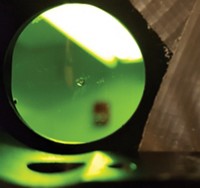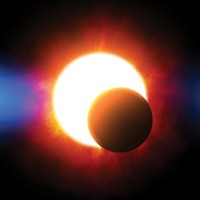Advertisement
Grab your lab coat. Let's get started
Welcome!
Welcome!
Create an account below to get 6 C&EN articles per month, receive newsletters and more - all free.
It seems this is your first time logging in online. Please enter the following information to continue.
As an ACS member you automatically get access to this site. All we need is few more details to create your reading experience.
Not you? Sign in with a different account.
Not you? Sign in with a different account.
ERROR 1
ERROR 1
ERROR 2
ERROR 2
ERROR 2
ERROR 2
ERROR 2
Password and Confirm password must match.
If you have an ACS member number, please enter it here so we can link this account to your membership. (optional)
ERROR 2
ACS values your privacy. By submitting your information, you are gaining access to C&EN and subscribing to our weekly newsletter. We use the information you provide to make your reading experience better, and we will never sell your data to third party members.
Lab Safety
Neutrogena recalls acne mask over concerns about blue light
Meanwhile, chemists are developing procedures to protect themselves from blue light used in photoredox reactions
by Tien Nguyen
August 6, 2019

Last month, Neutrogena voluntarily recalled its popular Light Therapy Acne Mask, citing customer complaints of eye problems and “an abundance of caution,” according to the company. The mask targets acne-causing bacteria by irradiating skin with blue light, which sits on the more energetic end of the visible spectrum. Blue light can increasingly be found lighting up organic chemistry labs as a way to drive radical reactions. The ocular safety concerns that led to the Neutrogena recall are also inspiring chemists to find ways to protect themselves when using this popular color of light.
According to Neutrogena, adverse reactions reported by mask users included “transient eye pain or irritation, tearing, blurry vision, seeing spots, or changes in color vision” that resolved once people stopped using the mask. These reports were rare, with the company receiving complaints on about 0.02% of masks sold at the time of the recall. In a statement to C&EN, Neutrogena added that mask users with underlying eye conditions or people who are taking medications that make skin more sensitive to light, such as antibiotics like doxycycline, could theoretically be at risk for eye injuries.
Dermatologists think blue light treats acne by activating porphyrins that then produce reactive oxygen species to kill acne-causing bacteria (Drug Resist. Updat.2012, DOI: 10.1016/j.drup.2012.07.001). Similarly, blue light could damage eye cells by exciting molecules that produce destructive oxygen species, says Michael R. Hamblin, an organic chemist at the Wellman Center for Photomedicine at Massachusetts General Hospital.
The damage done, he says, depends on the intensity of the light. Blue light emitting diodes (LEDs) that give off diffuse light aren’t much cause for concern while focused laser beams pose much greater risk, particularly from accidental exposure. Neutrogena’s recall of the mask, which appears to use blue LEDs, strikes Hamblin as an excessively cautious decision. While prolonged light exposure could possibly cause eye damage, Hamblin says that he doubts anyone would stare at a light long enough for it to happen. “It’s not comfortable,” he says, “why would you do it?”
Dermatologists aren’t the only ones interested in the photochemistry of blue light. Chemists use blue light to help catalyze photoredox reactions, which have proliferated over the past decade. In 2008, 22 ACS publication titles included the term photoredox; in 2018, there were 556. And as the field has grown, available blue-light sources have become more intense, raising potential exposure risks for researchers.
To shield themselves from blue light, chemists have devised a number of protective strategies depending on the light source.

At the University of Michigan, Corey Stephenson’s lab has been conducting photoredox chemistry research since the field took off and their light safety protocols have evolved over the years.
The group used to cover blue LED-powered reactions with aluminum foil. When the team switched to using higher intensity Kessil blue lamps about 2 years ago, they decided to step up their safety measures. Now, group members run reactions inside boxes or hoods covered with several layers of a thin amber film that filters out blue light. The chemists also wear glasses with amber lenses, says Ted McClain, a graduate student and one of the lab’s safety officers.
The lab also uses a high-intensity blue laser that is about 10–15 times as powerful as the Kessil lamps. When working with the laser, researchers must wear special light-filtering glasses that have been approved by the university’s laser safety officer.
Although academic labs are becoming more aware of light-exposure risks, safety precautions still vary, Stephenson says. He adds that chemists at companies have been leading the way in safety practices.
For example, Merck uses a similar safety setup as the Stephenson lab, covering reactions with amber plexiglass boxes and plastering bench hoods and walk-in hoods with an amber film, according to Dani M. Schultz, who helped develop the company’s light-safety protocols. The film blocks 99% of 200–470 nm light and 80% of 470–500 nm light. Chemists are also required to wear protective amber glasses when working with the reaction.
For scaled-up reactions run in flow, the company uses extremely high-powered LEDs that are as powerful as those used to light a concert stage. When running these reactions, chemists not only wear protective glasses but also employ cooling equipment to dissipate the heat generated by the lights, says L.-C. Campeau, who leads the process chemistry team at Merck.
Merck also worked with researchers at Princeton University to develop a commercial photoreactor that has a lid to keep researchers from being exposed to the light inside it.
Campeau and Schultz say placing amber films on hoods is likely the best option for academic labs because it’s simple, cheap, and effective as long as researchers remember to keep their hood sash down. Lab safety around blue lights should become standardized, Schultz says. “I hope to see more academic labs at least adopting amber glasses if not dedicating a hood in the lab with an amber hood sash.”





Join the conversation
Contact the reporter
Submit a Letter to the Editor for publication
Engage with us on Twitter